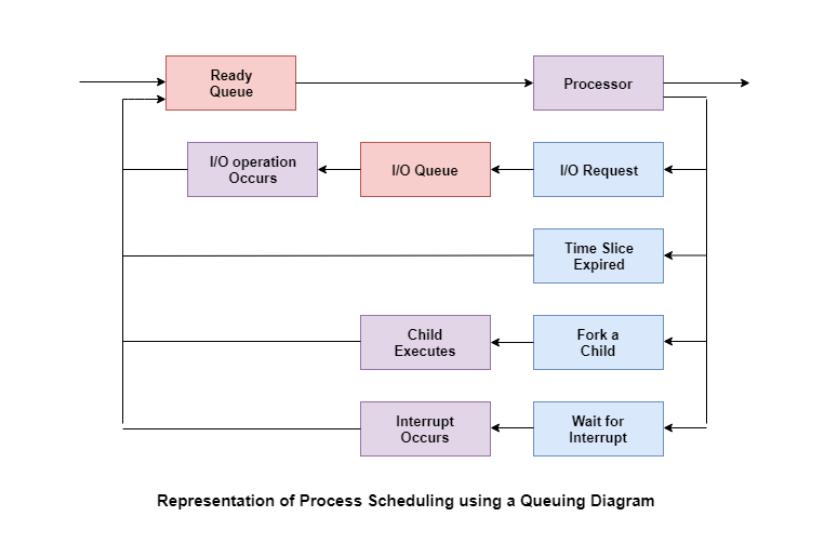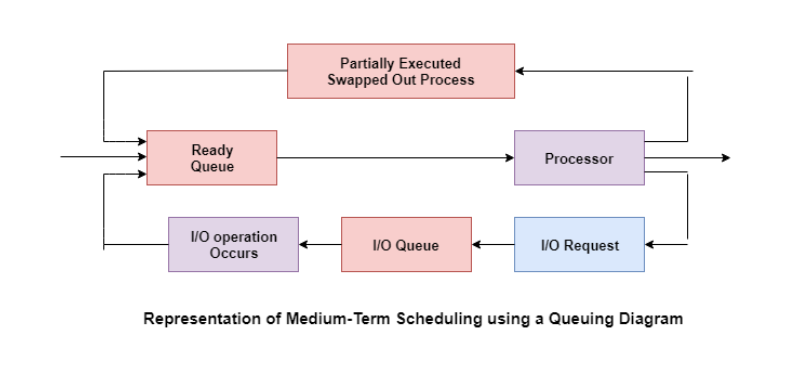
 Data Structure
Data Structure Networking
Networking RDBMS
RDBMS Operating System
Operating System Java
Java MS Excel
MS Excel iOS
iOS HTML
HTML CSS
CSS Android
Android Python
Python C Programming
C Programming C++
C++ C#
C# MongoDB
MongoDB MySQL
MySQL Javascript
Javascript PHP
PHP
- Selected Reading
- UPSC IAS Exams Notes
- Developer's Best Practices
- Questions and Answers
- Effective Resume Writing
- HR Interview Questions
- Computer Glossary
- Who is Who
Major Activities of an Operating System with Regard to Process Management
A process is an active program i.e a program that is under execution. It contains the program code, program counter, process stack, registers etc. Process Management deals with processes and the various mechanisms to handle them.
The various activities that the operating system performs with regard to process management are mainly process scheduling and context switching. Details about these are given as follows −
Process Scheduling
There are many scheduling queues that are used to handle processes. When the processes enter the system, they are put into the job queue. The processes that are ready to execute in the main memory are kept in the ready queue. The processes that are waiting for the I/O device are kept in the I/O device queue.
A diagram that represents process scheduling is as follows −
The different schedulers that are used for process scheduling are −
Long-Term Scheduler
The job scheduler or long-term scheduler selects processes from the storage pool and loads them into memory for execution. The job scheduler must select a careful mixture of I/O bound and CPU bound processes to yield optimum system throughput. If it selects too many CPU bound processes then the I/O devices are idle and if it selects too many I/O bound processes then the processor has nothing to do.
Short-Term Scheduler
The short-term scheduler selects one of the processes from the ready queue and schedules them for execution. The short-term scheduler executes much more frequently than the long-term scheduler as a process may execute only for a few milliseconds.
Medium-Term Scheduler
The medium-term scheduler swaps out a process from main memory. It can again swap in the process later from the point it stopped executing. This is helpful in reducing the degree of multiprogramming. Swapping is also useful to improve the mix of I/O bound and CPU bound processes in the memory.
A diagram that represents medium-term scheduling is as follows −
Context Switching
Removing a process from a CPU and scheduling another process requires saving the state of the old process and loading the state of the new process. This is known as context switching. The context of a process is stored in the Process Control Block (PCB) and contains the process register information, process state and memory information.
The dispatcher is responsible for context switching. It saves the context of the old process and gives control of the CPU to the process chosen by the short-term scheduler.



